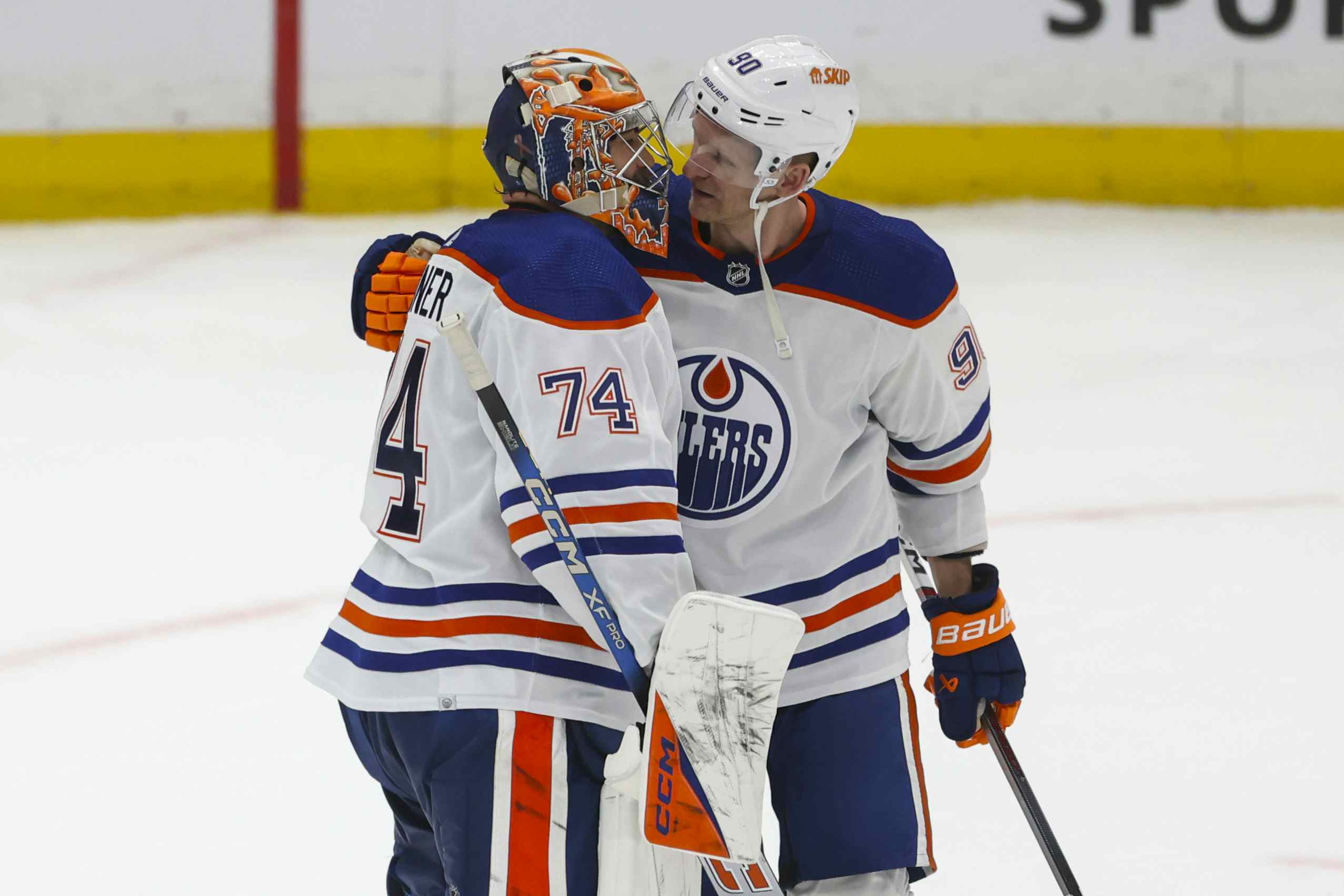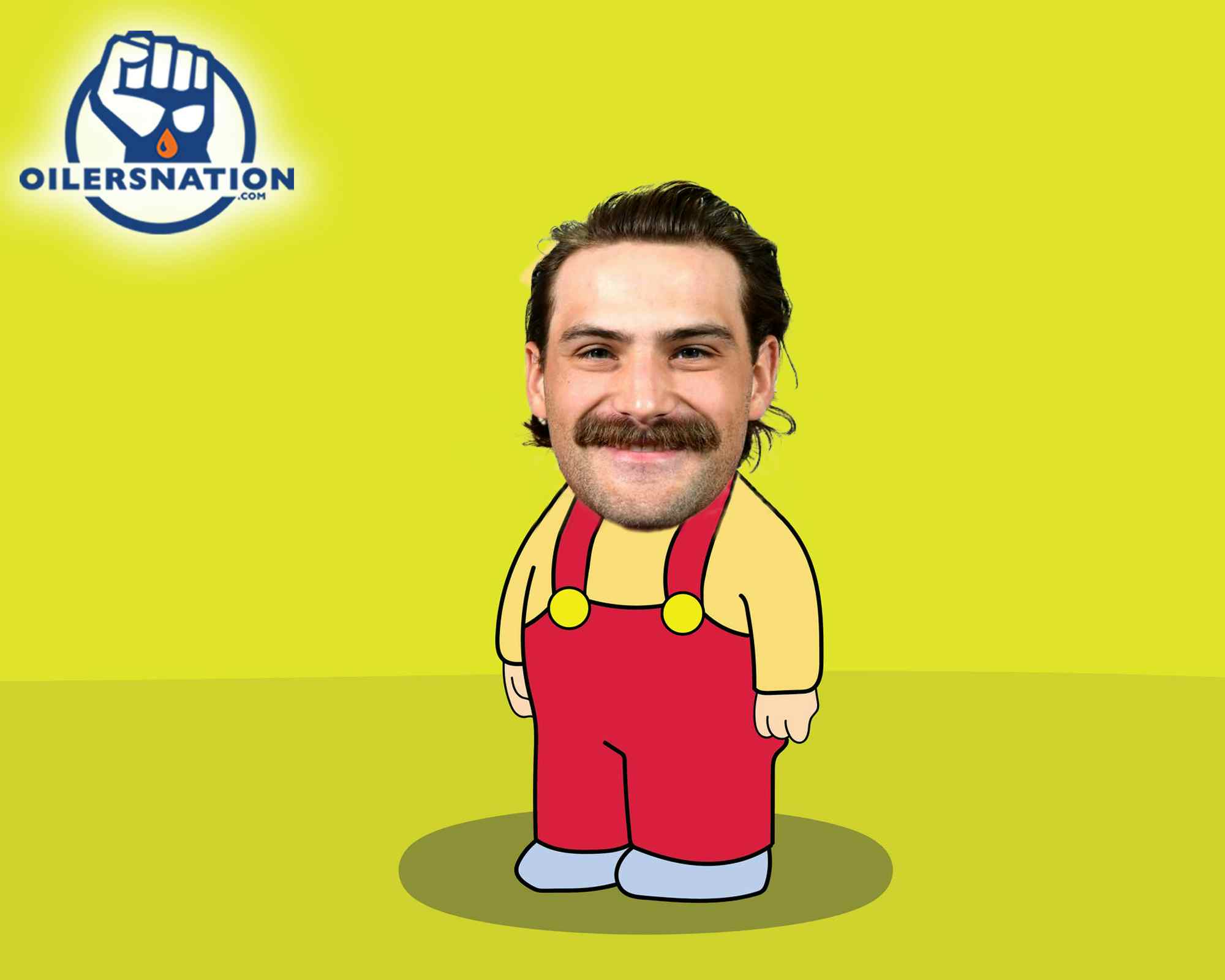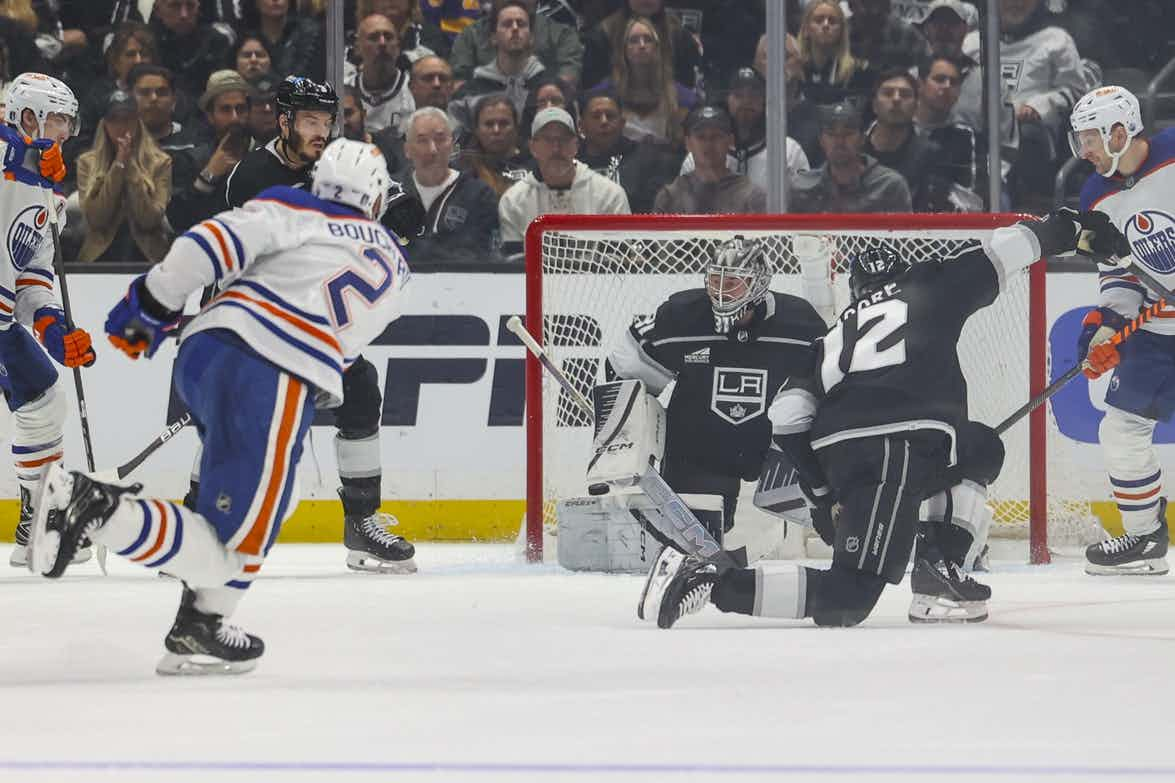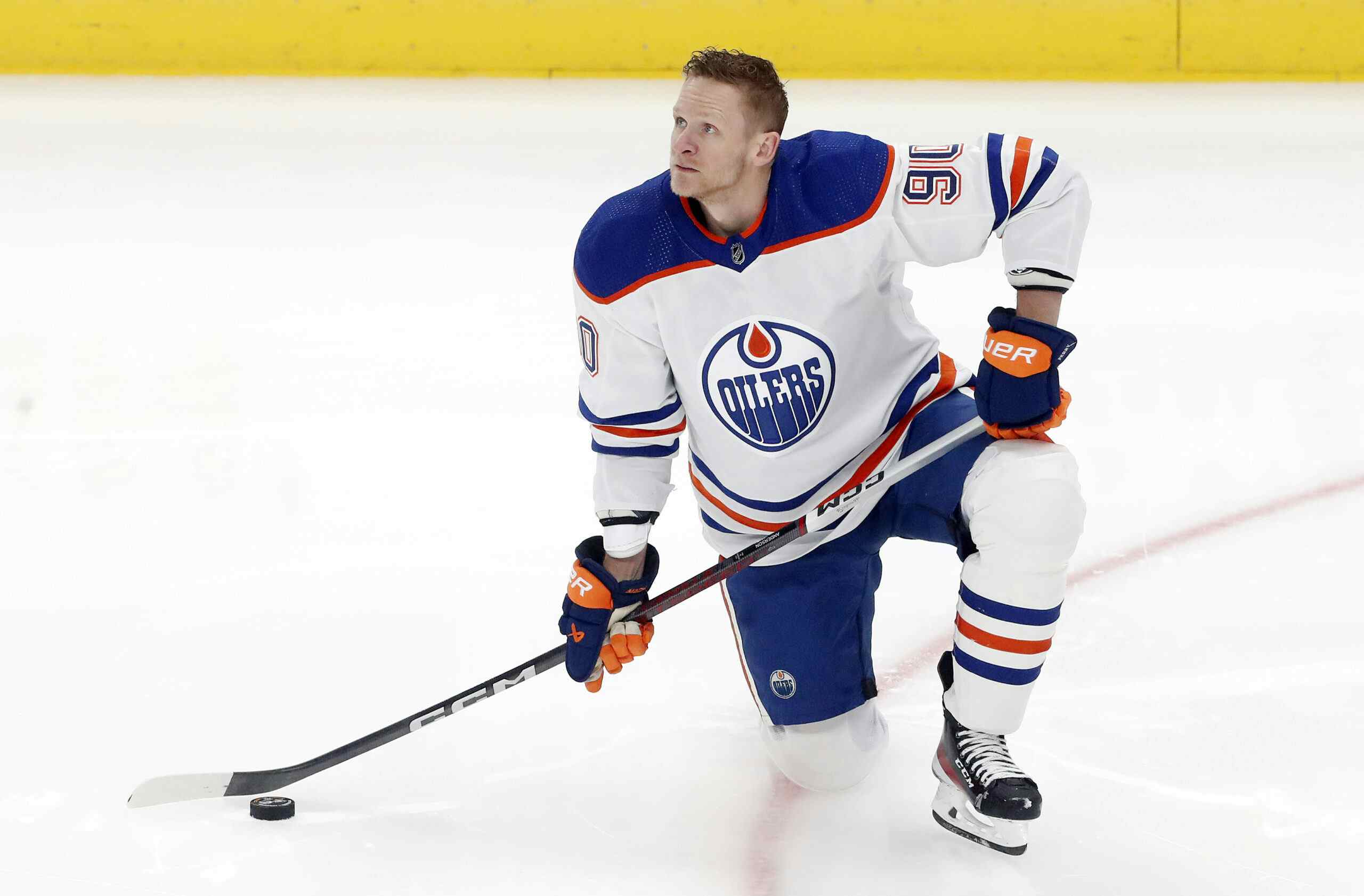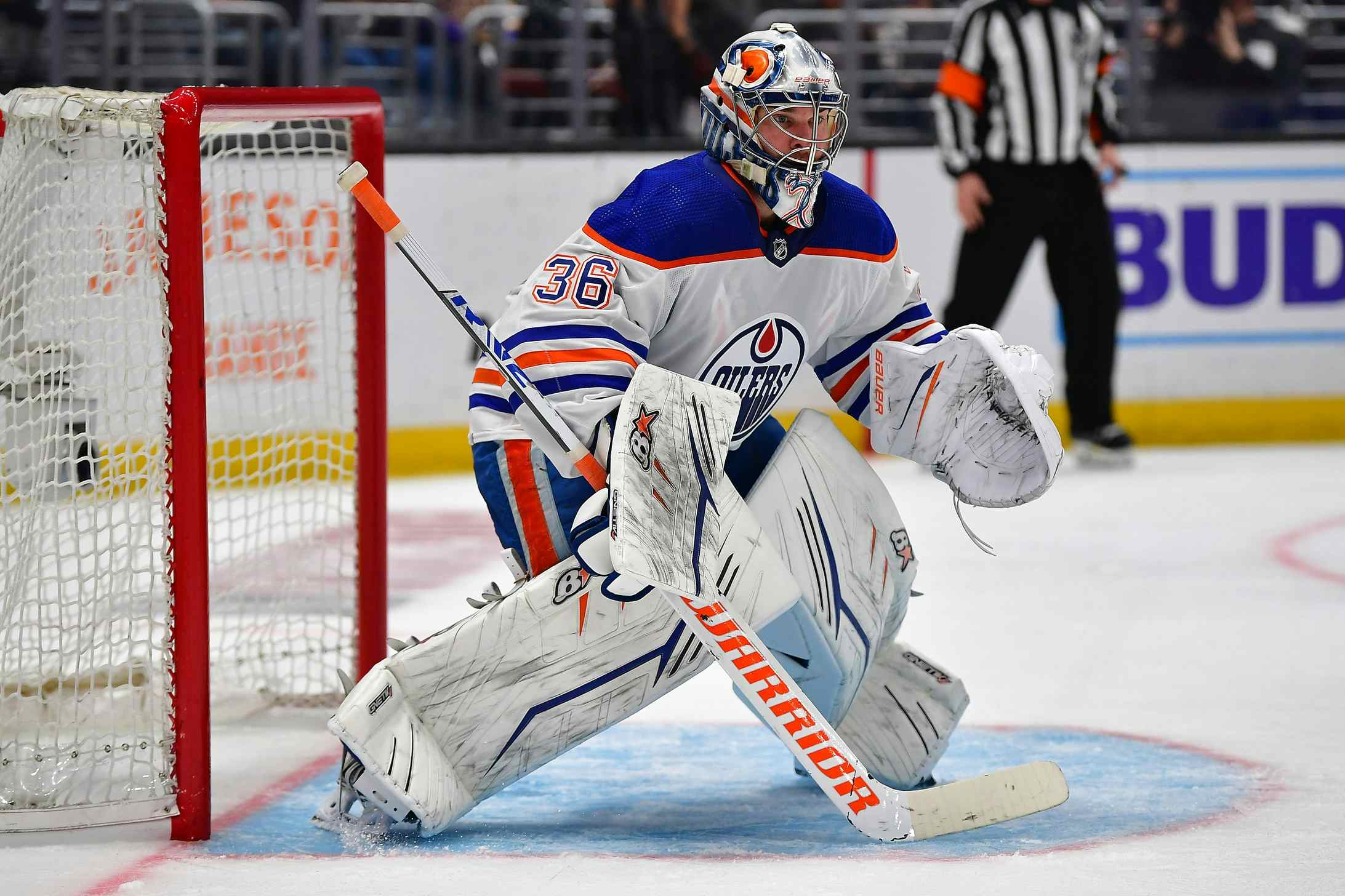How much salary would the Kings need to retain to make Mike Richards tradable?
Mike Richards has two Stanley Cup rings, a reputation as a two-way forward, and plays a position the Oilers desperately need help in.
He also has years of diminishing returns (in three full years in the West, he’s never cracked the 50-point mark), a general manager complaining about his summer training regimen and a Horcoffian $5.75 million cap hit for the rest of this season and the five that follow it.
Is there a trade to be made there?
Darren Dreger
This is TSN’s Darren Dreger talking about Richards’ availability on TSN 1260 a few days ago (via Nichols on Hockey):
Again, he’s not a fourth-line player. We know that. In L.A. he was during the Stanley Cup Final and he accepted that role because of the type of character he is. He’ll do anything to win a Stanley Cup. I think that he’s a real good third-line player, and on a weaker team he could certainly be that No. 2 guy. He’s got a beefy contract, as we know. He’s got another three years, at what – 5.75? But if he’s playing in your 2 spot or third-line center, that’s an acceptable figure. There’s nothing wrong with that. So this is going to be a tough one for Dean Lombardi because he loves Mike Richards, again, as a character guy. But given the cap issues of the Los Angeles Kings, I don’t think that – they can’t not look at everything. And as Bob McKenzie reported a week or so ago, Richards’ name is definitely out there.
One trade consideration not mentioned here is that Richards may or may not have a no-move clause; his contract with Philadelphia originally included one but the Flyers traded him before it kicked in. That may or may not mean the clause is invalidated.
Dreger significantly understates Richards’ contract, which runs six more years including this one, and further suggests he’s a No. 2 centre. Is he?
Richards in a Box
Richards is an all-purpose player who has roles on both special teams. In Los Angeles in 2013-14 he averaged 12:33 at even-strength, 1:33 on the penalty kill and 2:51 on the power play. He isn’t big (5’11”, 196 pounds) but he does play a somewhat physical style. He’s also excellent on faceoffs. He’s a reasonably good skater and a thinking man’s player whose hockey sense might be his best attribute.
What does he look like statistically?
|
Let’s walk through those numbers.
The first key one is PTS/82, or the number of points Richards’ totals project to over an 82-game schedule. Even boosting his games played, the only time he tops the 50-point mark is in 2012-13; for the most part he’s a mid-40’s point scorer and at age 29 he’s not getting any better. It’s worth remembering that those numbers come with significant power play time, too. If we move one column over to 5v5 P60 (points per hour in five-on-five situations) he comes in low and has for years. There isn’t really a comparable Oilers player over the same time period (he’s somewhere south of Sam Gagner offensively over these years) but he compares well in terms of even-strength scoring to a guy like Patrik Berglund in St. Louis.
In other words, in terms of scoring he’s a third-line centre at this point.
The next three columns help round out the picture. CorsiRel is his team’s shot attempts plus/minus with Richards on the ice vs. when other players on the ice. Richards’ numbers are lousy here, but he’s also playing for the Los Angeles Corsi Kings, so being slightly in the negatives isn’t a big deal at all. He’s mostly played second line level competition, and his zone start is generally in the average range for L.A. (though he’s also clearly trusted in the defensive zone, as his numbers this year reveal).
Given his team, I’m inclined to say that he’s probably a very reasonable third-line guy at even-strength. He’s not in the years of steep decline just yet, he can add value on special teams and he has a range of skills; this is a player most teams (including the Edmonton Oilers) could use. But it would be a bad idea to think of him as a No. 2 pivot, because on merit he probably isn’t.
Long-Term Thinking

Richards isn’t a stop-gap; if the Oilers acquire him he’s going to be with them for the long haul which means the team needs to look beyond this season to assess his fit.
There shouldn’t be any worries about having too many good centres on the long-term depth chart, even with prospects coming and assuming Leon Draisaitl develops into a star; teams all over the NHL play centres on the wing all the time and that’s a perfectly rational thing for the Oilers to do as well. So let’s ignore that part of it.
A team adding Richards down the middle is committing to an intelligent, well-rounded player in the slot. They’re also committing to a small pivot entering the back half of his career.
Richards would slot in as the No. 2 pivot on the current depth chart, but eventually he’d be the team’s No. 3 option. It’s okay to overpay a little bit in some positions (as the Oilers did with Boyd Gordon, a contract nobody complains about) so to me it would be alright if Richards were earning a little more than the comparable Berglund ($3.7 million per year). That would mean L.A. would need to be willing to retain somewhere between $1.5 and $2.0 million per year for the next six seasons; if they were willing to do that the Oilers would need to think about making a deal.
But even so, Richards is a ‘last resort’ option in my view because of his age and the term left on his deal. Compare, for example, the 26-year-old, 6’3″, 217 pound Berglund; how much better would he fit with the team given his age, contract and size? It’s reasonable to think that there are better fits out there.
RECENTLY BY JONATHAN WILLIS
Recent articles from Jonathan Willis

